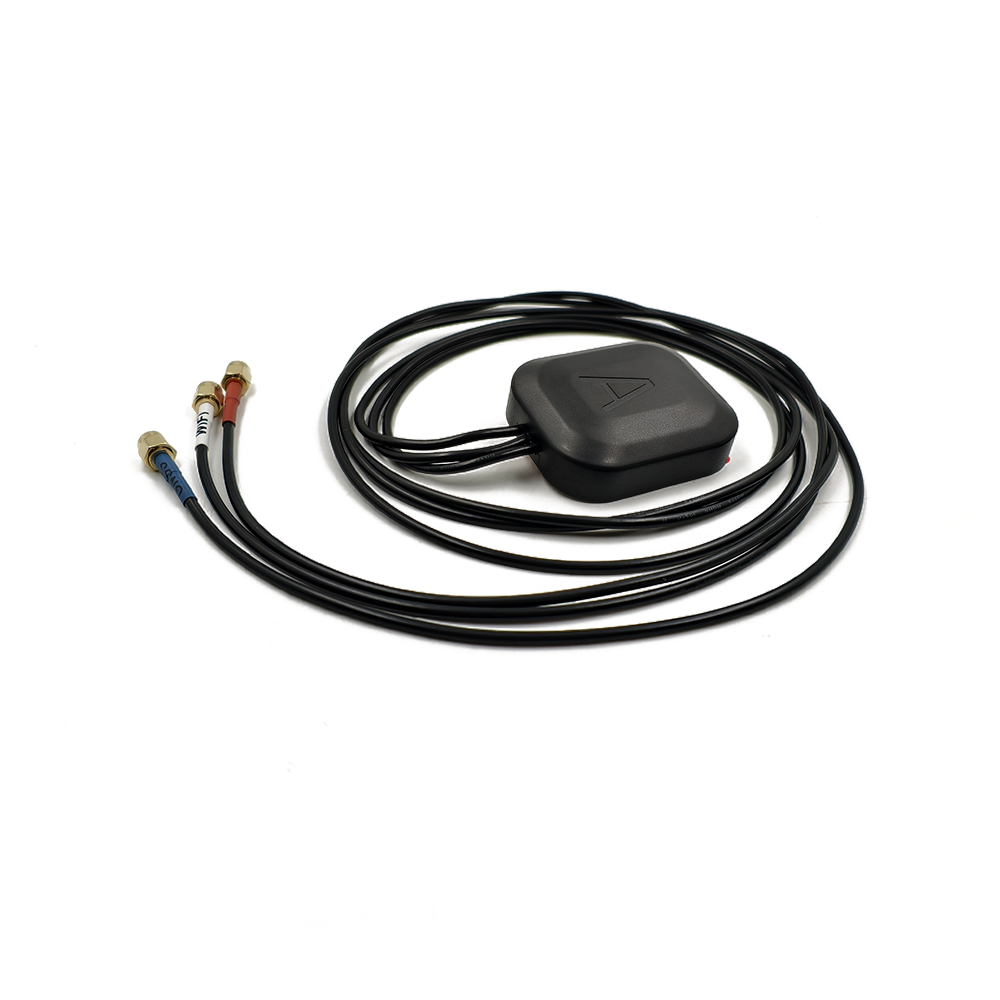Overview
The term "embedded" refers to the integration of the antenna, low-noise amplifier (LNA), filtering components, and sometimes even the GNSS receiver chipset into a single module designed for seamless incorporation into larger systems. This integration reduces design complexity for end-product manufacturers, shortens development cycles, and ensures optimal performance through factory-tuned components. These modules are commonly used in applications where space is limited and high performance is critical, such as in drones, autonomous vehicles, precision agriculture equipment, and mobile robotics. The growing reliance on GNSS in safety-critical and high-precision applications has driven the need for more robust and reliable solutions, making embedded multi-frequency modules a cornerstone of next-generation navigation systems.
Beyond their technical capabilities, these modules are also designed with practical considerations in mind. They often feature compact footprints, low power consumption, and resistance to electromagnetic interference (EMI), making them suitable for deployment in electrically noisy environments. Many modules also include built-in diagnostics and signal integrity monitoring to ensure consistent performance. As the number of satellites and available frequencies continues to grow, embedded multi-frequency GNSS antenna modules are becoming more capable and cost-effective, enabling widespread adoption across consumer, industrial, and commercial markets. Their role is expected to expand further as emerging technologies such as 5G networks, Internet of Things (IoT) devices, and smart infrastructure increasingly depend on accurate and reliable positioning data.
Design and Construction
The design and construction of embedded multi-frequency GNSS antenna modules involve a careful balance of electromagnetic performance, mechanical integration, and signal integrity. At the core of the module is the antenna element, typically a patch antenna or a combination of stacked patches designed to resonate across multiple frequency bands. Patch antennas are favored for their directional radiation pattern, compact size, and ability to provide good axial ratio, which is essential for receiving circularly polarized GNSS signals. To support multiple frequencies, engineers often use stacked or multi-layer patch designs, where each layer is tuned to a specific band (e.g., L1 at 1575.42 MHz, L2 at 1227.60 MHz, and L5 at 1176.45 MHz). These layers are carefully engineered to minimize mutual coupling and maintain consistent gain across all bands.
Surrounding the antenna element are critical supporting components, including a low-noise amplifier (LNA), bandpass filters, and impedance matching networks. The LNA is crucial for boosting weak satellite signals while adding minimal noise, thereby improving the signal-to-noise ratio (SNR). Filters are used to reject out-of-band interference from cellular, Wi-Fi, or other RF sources, which is especially important in dense urban environments. Impedance matching ensures maximum power transfer from the antenna to the receiver, reducing signal reflections and losses. In many embedded modules, these components are integrated onto a single printed circuit board (PCB) or within a shielded package to minimize size and protect against electromagnetic interference.
Thermal and mechanical stability are also key design considerations. The materials used in the antenna substrate and housing must maintain performance across a wide temperature range and resist degradation from moisture and vibration. Many modules are encapsulated in ruggedized casings suitable for outdoor or industrial use. Additionally, the integration of the module into the host device requires careful attention to grounding, placement, and nearby metal objects, which can detune the antenna or block signals. To assist designers, manufacturers often provide reference layouts and simulation data. Overall, the construction of these modules reflects a high level of systems engineering, combining RF design, materials science, and miniaturization techniques to deliver reliable, high-performance GNSS solutions.
Working Principles
Embedded multi-frequency GNSS antenna modules operate by capturing and processing radio signals transmitted by navigation satellites orbiting the Earth. Each GNSS satellite continuously broadcasts timing and orbital data on multiple frequencies using spread-spectrum modulation techniques. The antenna within the module is designed to receive these weak, circularly polarized signals across several frequency bands simultaneously. Once captured, the signals are amplified by a low-noise amplifier (LNA) to overcome cable and circuit losses, then filtered to remove interference from other wireless systems. The conditioned RF signal is then passed to a GNSS receiver chipset, which may be integrated within the same module or located externally.
The receiver performs correlation and demodulation to extract navigation data from each satellite signal. By measuring the time delay between signal transmission and reception, the receiver calculates the distance (pseudorange) to each satellite. Using trilateration with signals from at least four satellites, the receiver determines the user’s position in three dimensions. The use of multiple frequencies is key to enhancing accuracy. For example, the ionosphere introduces a frequency-dependent delay in GNSS signals. By comparing the arrival times of signals on two different frequencies (e.g., L1 and L2), the receiver can estimate and correct for this delay, significantly reducing positioning errors.
Moreover, multi-frequency operation improves signal availability and reliability. In challenging environments such as urban canyons or under tree canopy, signals on one frequency may be blocked or reflected (multipath), while others remain usable. Access to multiple constellations increases the number of visible satellites, further improving geometry and solution robustness. Advanced modules may also support carrier-phase measurements, enabling real-time kinematic (RTK) or precise point positioning (PPP) techniques for centimeter-level accuracy. The embedded nature of the module ensures that all components are optimized to work together, minimizing signal degradation and maximizing sensitivity and time-to-first-fix (TTFF). This seamless integration of signal reception, conditioning, and processing underpins the module’s ability to deliver high-precision positioning in real time.
Advantages and Challenges
-
Embedded multi-frequency GNSS antenna modules offer numerous advantages that make them ideal for modern positioning applications. The primary benefit is significantly improved accuracy. By leveraging signals from multiple frequencies, these modules can correct for ionospheric delays, the largest source of error in GNSS positioning. This correction enables decimeter or even centimeter-level accuracy when combined with RTK or PPP techniques. Additionally, multi-constellation support increases satellite availability, reducing the likelihood of signal outages and improving positioning reliability in obstructed environments. The embedded design simplifies integration, reduces development time, and ensures consistent performance across different devices and manufacturers.
Another key advantage is enhanced signal robustness. In urban or indoor settings, where multipath and signal blockage are common, access to multiple frequencies and constellations allows the receiver to maintain a lock on sufficient satellites for accurate positioning. The integration of LNAs and filters within the module improves signal-to-noise ratio and reduces interference, further boosting performance. Power efficiency and compact size make these modules suitable for battery-powered and space-constrained applications such as wearables, drones, and IoT devices.
Despite these benefits, several challenges remain. Design complexity increases with the need to support multiple frequencies and maintain consistent antenna performance across all bands. Achieving optimal gain, axial ratio, and bandwidth simultaneously is difficult, especially in small form factors. Electromagnetic interference from nearby electronics can degrade performance, requiring careful shielding and layout. Cost is another consideration; while prices are decreasing, multi-frequency modules are still more expensive than single-frequency counterparts. Additionally, the increased data processing requirements demand more powerful and power-hungry receiver chips, which can be a limitation in low-power applications. Nevertheless, ongoing advancements in semiconductor technology and antenna design are steadily overcoming these challenges.
Applications and Future Trends
-
Embedded multi-frequency GNSS antenna modules are finding widespread use across diverse industries due to their high accuracy and reliability. In autonomous vehicles and advanced driver-assistance systems (ADAS), they provide the precise positioning needed for lane-level navigation and collision avoidance. Drones and unmanned aerial vehicles (UAVs) rely on these modules for stable flight control, geofencing, and precision mapping. In precision agriculture, farmers use them for automated steering, yield monitoring, and variable-rate application of fertilizers and pesticides, increasing efficiency and reducing environmental impact. Surveying and construction equipment also benefit from centimeter-level accuracy for site planning and machine control.
Other applications include asset tracking, wearable devices, robotics, and smart city infrastructure. For example, logistics companies use these modules to monitor the real-time location of high-value assets with high precision. In mobile devices, they enhance location-based services and emergency response systems. Looking ahead, future trends point toward even greater integration, with modules combining GNSS, inertial measurement units (IMUs), and 5G connectivity for seamless positioning in all environments. Artificial intelligence (AI) may be used to predict signal quality and optimize receiver performance. Miniaturization and reduced power consumption will enable broader adoption in IoT and edge computing devices. As satellite constellations expand and new frequencies are introduced, embedded multi-frequency GNSS modules will continue to evolve, becoming faster, more accurate, and more accessible.
Conclusion
Embedded multi-frequency GNSS antenna modules represent a transformative advancement in positioning technology. By integrating multi-band, multi-constellation signal reception with advanced RF components in a compact, ready-to-use package, they deliver unprecedented levels of accuracy, reliability, and ease of integration. Their ability to correct ionospheric errors, resist multipath interference, and maintain signal lock in challenging environments makes them indispensable for high-precision applications ranging from autonomous systems to precision agriculture. While design complexity and cost remain challenges, ongoing innovation in materials, semiconductor technology, and system integration is rapidly addressing these limitations.
As the world becomes increasingly dependent on accurate geolocation data, the role of these modules will only grow. They are not just components but enablers of next-generation technologies that require trusted and precise positioning. From smart transportation to industrial automation and beyond, embedded multi-frequency GNSS antenna modules are laying the foundation for a more connected and intelligent future. Their continued evolution will ensure that GNSS remains a cornerstone of global infrastructure in the decades to come.




































































 Language
Language
 En
En Cn
Cn Korean
Korean

 Home >
Home > 








 18665803017 (Macro)
18665803017 (Macro)













